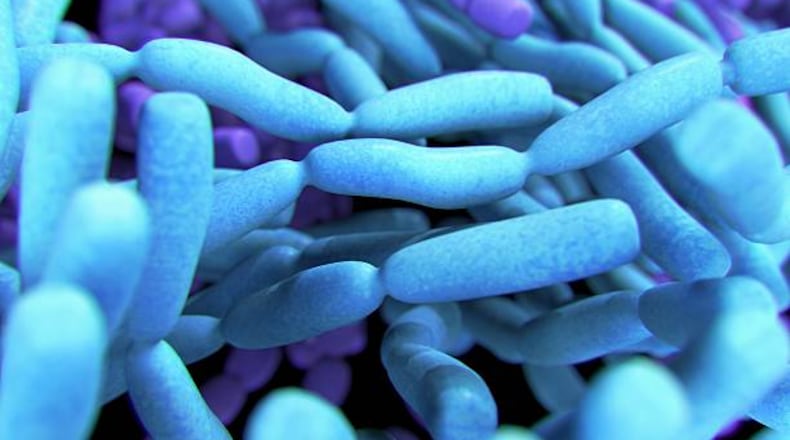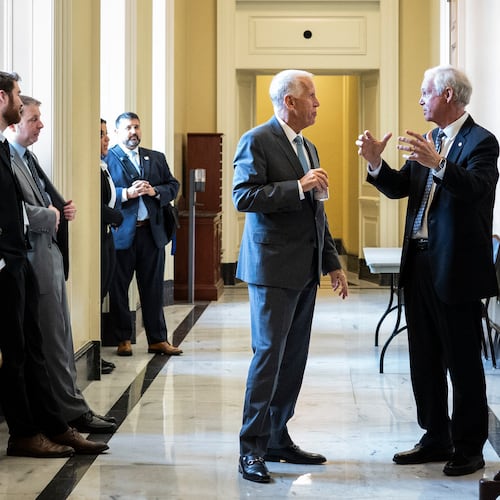I woke up one morning with the side of my face purple and my ear swollen to more than twice its normal size. I’ll never forget the look on the face of the attending infectious disease physician when he told me I needed immediate emergency surgery to evacuate the site. That surgery consisted of cutting out and cauterizing the infected tissue behind my ear and a sizable portion of my earlobe and scalp, along with 50 stitches across four layers to piece the remains back together.
When the culture came back days later, it confirmed I was suffering from a bacterial “superbug,” a pathogen that evolved to resist traditional antibiotics due to a phenomenon called antimicrobial resistance, or AMR. The infection was relentless. That first day was just the beginning of the nightmarish process of being an AMR patient. The infection continually returned. I needed more than a dozen additional surgeries with long courses of antibiotics that eradicated my gut flora – all with no resolution in sight.
Credit: Courtesy
Credit: Courtesy
I was a pacemaker manufacturer sales rep at the time, making daily rounds to help patients get the lifesaving devices they need. The superbug I contracted, Klebsiella aerogenes, is often found in hospitalized patients but uncommon in skin. I almost certainly picked this superbug up while working, likely doing something as innocuous as touching the wrong table in the wrong room, followed by my own scalp.
And so could you. Hospitals are prime breeding grounds for superbugs. In fact, superbugs were associated with nearly 173,000 American deaths in 2019, making AMR the third leading cause of death from disease in the United States behind heart disease and cancer.
In the end, I solved my own problem. After years of research on the chemistry equipment and second-hand machinery I installed in my kitchen and garage, I devised a first-of-its-kind antimicrobial ointment that can eliminate superbugs in wounds and shows no known resistance. Thanks to my one-man team, a credit line and the Food and Drug Administration help desk, it’s now FDA-cleared and working miracles for others, and I am CEO of a company that works every day to bring this solution to more patients.
But as a society, we can’t count on home-grown solutions to what could be a species-ending problem.
Since the introduction of antibiotics in the 20th century, bacteria have been evolving to resist them. It’s really very simple: we want to kill them, and they want to live. Every use of an antimicrobial gives the target pathogens a chance to survive and come back stronger, rendering existing treatments less effective.
Bacteria evolve quickly. It can take about twenty minutes for a new generation to emerge. We are one bad-luck mutation away from a problem we’re currently powerless to stop.
Antimicrobial stewardship programs -- which inform clinicians about appropriate antimicrobial use -- are critical. But COVID-19 erased years of progress. Early on, well-intended doctors prescribed antibiotics to gravely ill patients to ward off secondary infections. Meanwhile, surges in hospitalizations led resistant hospital-onset infections to jump 15% in 2020.
We need a steady supply of novel antimicrobials to have any hope of beating back superbugs. Nearly 5 million people died globally in 2019 in connection with antibiotic resistance, and AMR overall could kill 10 million people annually worldwide by 2050.
The problem is that under sound stewardship protocols, doctors should prescribe new antibiotics only when older ones won’t work -- lest the bugs more quickly develop resistance to the new medicines. That means sales will be low. Under these circumstances, manufacturers can’t recoup their research and development costs. This broken ecosystem is the main reason behind the exodus in investment toward novel antimicrobial R&D.
We must repair the disconnect between public health needs and private investment.
Fortunately, we know how to solve this problem: change the incentives. We did the same thing successfully to encourage new rare diseases treatments, which likewise would never generate enough sales to justify the development expense. The speedy response to COVID-19 also shows what we’re capable of when incentives align with need.
The answer for the broken antimicrobials market is a plan called the Pasteur Act, which was recently reintroduced in Congress. The legislation would establish an alternative payment model whereby the government enters into contracts with antimicrobial developers to pay upfront for access to however much, or little, of the new treatment federal programs need. Patients will gain access to critically needed medications while antimicrobial innovators are assured a return on their investment.
Superbugs are a natural feature of evolution. More are coming. It would be a shame if we’re not wise enough as a species to take readily available steps to keep them in check.
Bradley Burnam of Atlanta is a superbug survivor and the founder and CEO of Turn Therapeutics. His story is featured in the new documentary “HOLOBIOME.” He will be among the panelists discussing microbes and the future of infectious disease Saturday at the Atlanta Science Festival.
About the Author
Keep Reading
The Latest
Featured




